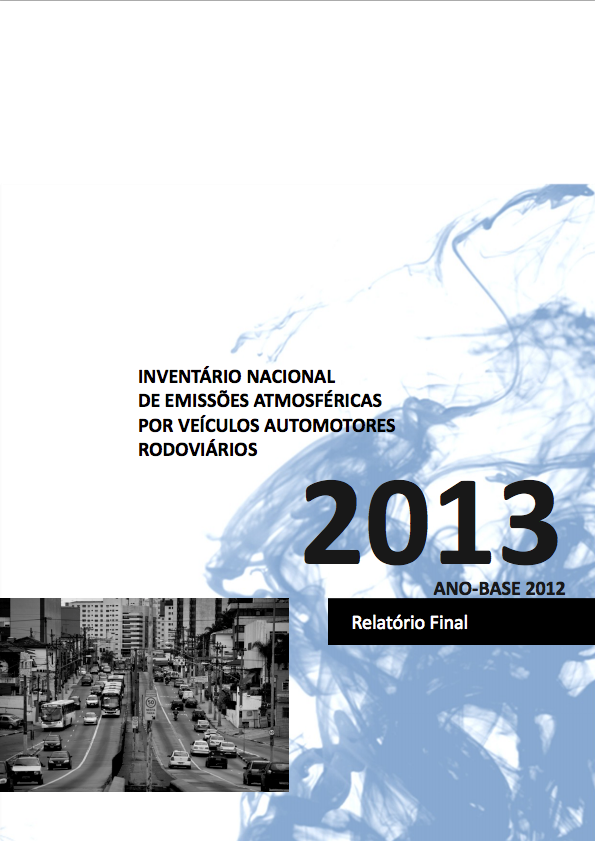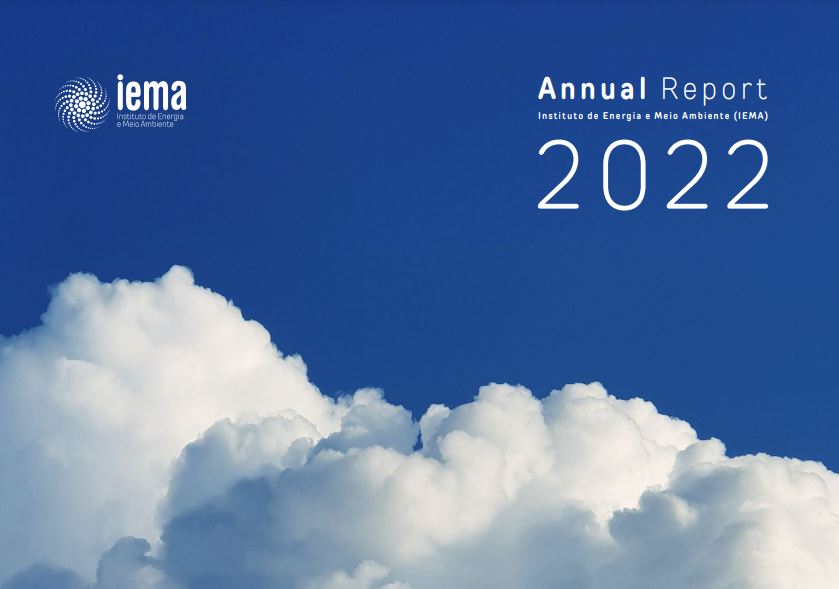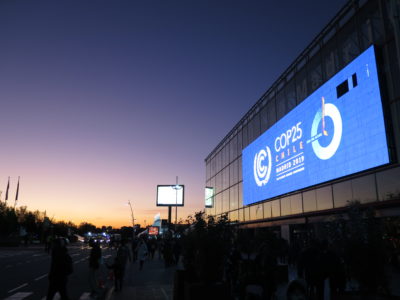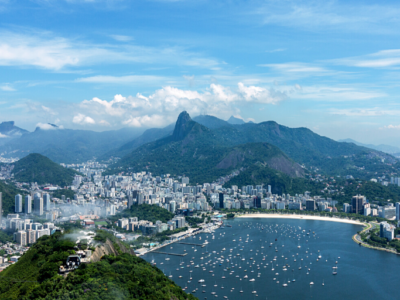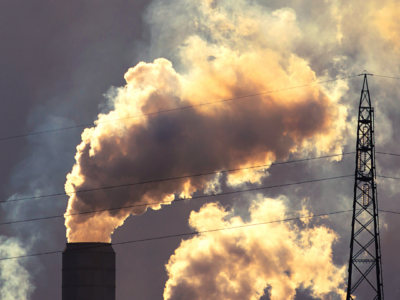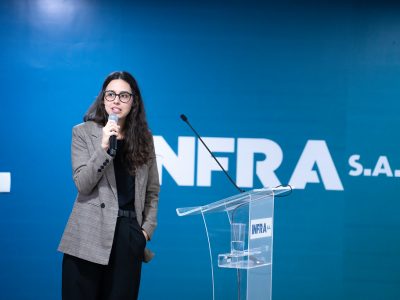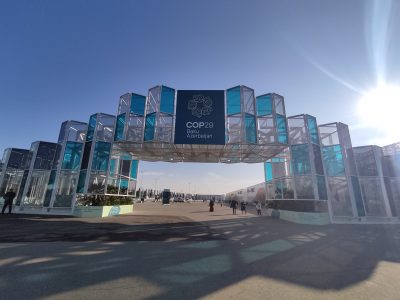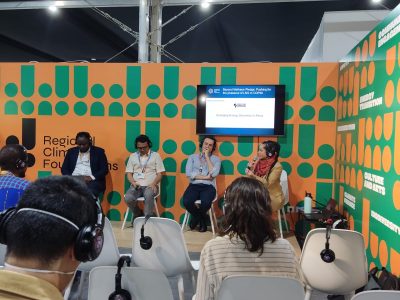Three months of polluted air. For 88 days, the inhabitants of Macaé breathed an amount of ozone in 2020 above that recommended by the World Health Organization (WHO), according to the technical opinion “Air quality in Macaé (RJ),” published today, December 15, by Instituto de Energia e Meio Ambiente (IEMA). That was the mark achieved by the Fazenda Severina station that measures air quality in Macaé, near the two thermoelectric plants that operate there. With the forecast of the expansion of thermoelectric plants in the municipality, residents and tourists of the “Little Princess of the Atlantic” town, internationally known as the “Oil Capital,” may suffer even more from chronic diseases caused by inappropriate air quality. Regardless, the local electricity generation capacity will likely increase by more than eight times. Click here to read the full technical opinion.
“It is necessary to meet both objectives simultaneously: protect the health of the local population and ensure electricity generation for the country’s socio-economic development,” said David Tsai, IEMA project coordinator and one of the authors of the study. The projected increase of new or longer connected thermoelectric plants indicates that some regions will be notably more impacted. As is the case of Macaé, in the North Fluminense region. According to the document,
- There are gaps in daily data production by the four stations operating in the municipality. The Fazenda Severina and Pesagro stations did not generate sufficient data about the amount of ozone pollutants in 2018 and 2019. Between 31% and up to 80% of the days of the year, there were no valid measurements for the calculation of the daily average. The same situation also occurred at Pesagro station in 2016 and 2017. The Cabiúnas station has a relevant data gap but to a lesser extent. Fazenda Aires, on the other hand, maintained an average of 7% of the number of days per year without data;
- There are frequent concentrations of the pollutant ozone (O3) above the recommendations of the World Health Organization (WHO), especially in the last two years (2019 and 2020). There are also sporadic critical episodes of sulfur dioxide (SO2) pollution detected by one of the stations;
- The excess ozone in the region appears in reports from the environmental agency of Rio de Janeiro and the environmental impact assessments of the new thermoelectric facilities planned for the municipality. In other words, the issue of air pollution is a problem recognized by the local government and the electricity sector. Nevertheless, the energy pole focused on exploiting natural gas is planned to expand, generating more pollutants.
Natural gas
Macaé has two natural gas processing plants (Petrobras and Shell/Mitsubishi). There are also two natural gas thermoelectric plants (TPPs): Thermomacaé TPP (formerly Mário Lago) with 922 MW of installed capacity and Norte Fluminense TPP with almost 827 MW of installed capacity. Together they represent 4% of the total installed thermoelectric power in Brazil. In addition, the Vale Azul I thermoelectric plant is under construction and licensed for more than 565 MW of installed capacity.
Four new thermoelectric plants are planned (Litos, São João Batista, Vale Azul, and Nossa Senhora de Fátima) and the expansion of an existing plant (Norte Fluminense), the Macaé Port Terminal (Tepor), and a new natural gas processing unit. Those new thermoelectric plants will increase by more than eight times the current generation capacity in the municipality.
Such projects are reinforced by expanding offshore production (deep water). Recently, the decision was announced to sell the pre-salt gas production of the basin through an underwater gas pipeline, connecting the platforms to the Cabiúnas Terminal, already in operation in the city. “Macaé may even continue to expand its electricity generation, but this should be done without worsening the air quality. It is necessary to employ cleaner technologies or, if that is not possible, expand the electric generation to other places respecting its capacity to withstand the load of pollutants,” said Tsai. “Increasing pollutant emissions in an already saturated region with an ozone pollution problem is inappropriate. The electricity sector and governments need to pay attention to this issue,” he said. Tsai explained that “It is necessary to draw up an official inventory of air pollutant emissions, an instrument to more precisely identify how each installation contributes to local pollution, to plan certain actions to reduce emissions.”
Polluted air
Ozone in the lower atmosphere is not emitted directly but formed in chemical reactions that occur under the influence of high temperatures and levels of solar radiation, having as primary reagents (the “ingredients of the recipe”) the non-methane volatile organic compounds (NMVOC) and nitrogen oxides (NOx). Both pollutants are emitted directly by the polluting sources.
According to data from the Greenhouse Gas Emission and Removal Estimating System (SEEG Municipalities), thermoelectric plants accounted for 41% of the total emissions of those volatile organic compounds in the municipality in 2018. The rest comes from transport in the region, emphasizing emissions associated with cars and motorcycles. Regarding nitrogen oxides, most emissions, more than 70%, are from thermoelectric plants. The burning of diesel fuel in road transport, mainly from trucks and buses, accounts for 14%.
There is systematic local pollution caused by ozone gas. The expansion of the Macaé power hub focused on the exploitation of natural gas must consider the implications of worsening air pollution and its impact on the health of the population. There are more than ten thermoelectric projects with an environmental license, in addition to the investments announced by large oil companies.
Air quality
The data analyzed in the Technical Opinion are produced by air quality stations operated by potentially polluting projects and sent in real-time to the main office of the State Environmental Institute (Instituto Estadual do Ambiente – INEA), where they are stored, processed, and made available on the agency’s website. IEMA includes the data in its Air Quality Platform. This tool gathers and standardizes air quality monitoring information generated by government agencies throughout Brazil.
The information published by INEA indicates four automatic air quality monitoring stations operating in Macaé: Fazenda Severina (since 2002), Pesagro (also since 2002), Fazenda Aires (since 2003), and Cabiúnas (since 2010). The pollutants monitored by those stations are carbon monoxide (CO), nitrogen oxides (NOx), ozone (O3), hydrocarbons (HC), particulate matter (PM10), total suspended particles (TSP), and sulfur dioxide (SO2). The last three are only monitored by Cabiúnas station.
